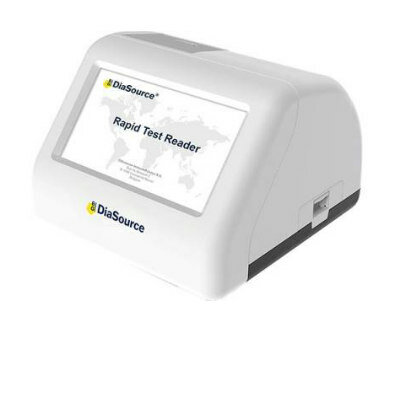Novel Hydrogel Delivers Sustained Therapeutic Doses of siRNA
By LabMedica International staff writers
Posted on 06 Sep 2012
A recent paper described a novel method for packaging and delivery of therapeutic doses of small interfering RNA (siRNA) for cancer treatment with minimal adverse side effects or for tissue engineering applications.Posted on 06 Sep 2012
Since in principle any gene can be silenced ("knocked down") by a synthetic siRNA with a complementary sequence, siRNAs have become an important tool for validating gene function and drug targeting. These molecules have a well-defined structure: a short (usually 21 base pairs) double-stranded RNA (dsRNA) with phosphorylated 5' ends and hydroxylated 3' ends with two overhanging nucleotides. The Dicer enzyme (an endoribonuclease in the RNase III family that cleaves double-stranded RNA and pre-microRNA (miRNA) into short double-stranded RNA fragments) catalyzes production of siRNAs from long dsRNAs and small hairpin RNAs. These small RNAs can bind to other specific messenger RNA (mRNA) molecules and either increase or decrease their activity, for example by preventing an mRNA from producing a protein. RNA interference has an important role in defending cells against parasitic nucleotide sequences – viruses and transposons – but also in directing development as well as gene expression in general.
The most severe limitation to applying RNA interference technology is delivery, including localizing the molecules to a specific site of interest to target a specific cell population and sustaining the presentation of these molecules for a controlled period of time. In a study that was published in the August 16, 2012, online edition of the journal Acta Biomaterialia, investigators at Case Western Reserve University (Cleveland, OH, USA) engineered a functionalized, biodegradable system created by covalent incorporation of cationic linear polyethyleneimine (LPEI) into photocrosslinked dextran (DEX) hydrogels through a biodegradable ester linkage.
The key innovation of this system was that control over the sustained release of siRNA was achieved, as LPEI could electrostatically interact with siRNA to maintain siRNA within the hydrogels, and degradation of the covalent ester linkages between the LPEI and the hydrogels led to tunable release of LPEI/siRNA complexes over time. The covalent conjugation of LPEI did not affect the swelling or degradation properties of the hydrogels, and the addition of siRNA and LPEI had minimal effect on their mechanical properties. These hydrogels exhibited low cytotoxicity against human embryonic kidney 293 cells (HEK293).
The release profiles could be tailored by varying DEX (8% and 12%) and LPEI concentrations with nearly 100% cumulative release achieved at day nine (with 8% gel) and day 17 (with 12% gel). The released siRNA exhibited high bioactivity with cells surrounding and inside the hydrogels over an extended time period.
"Local delivery helps target the siRNA to specific cell populations of interest, such as cancer cells in a tumor or stem cells in a bone fracture," said senior author Dr. Eben Alsberg, associate professor of biomedical engineering and orthopedic surgery at Case Western Reserve University. "The ability to alter cell behavior with siRNA can depend on the length of exposure to the genetic material. We can tune the material properties so we can control the dose and rate at which cells are exposed to siRNA. This capacity may prove to be therapeutically valuable."
Related Links:
Case Western Reserve University














